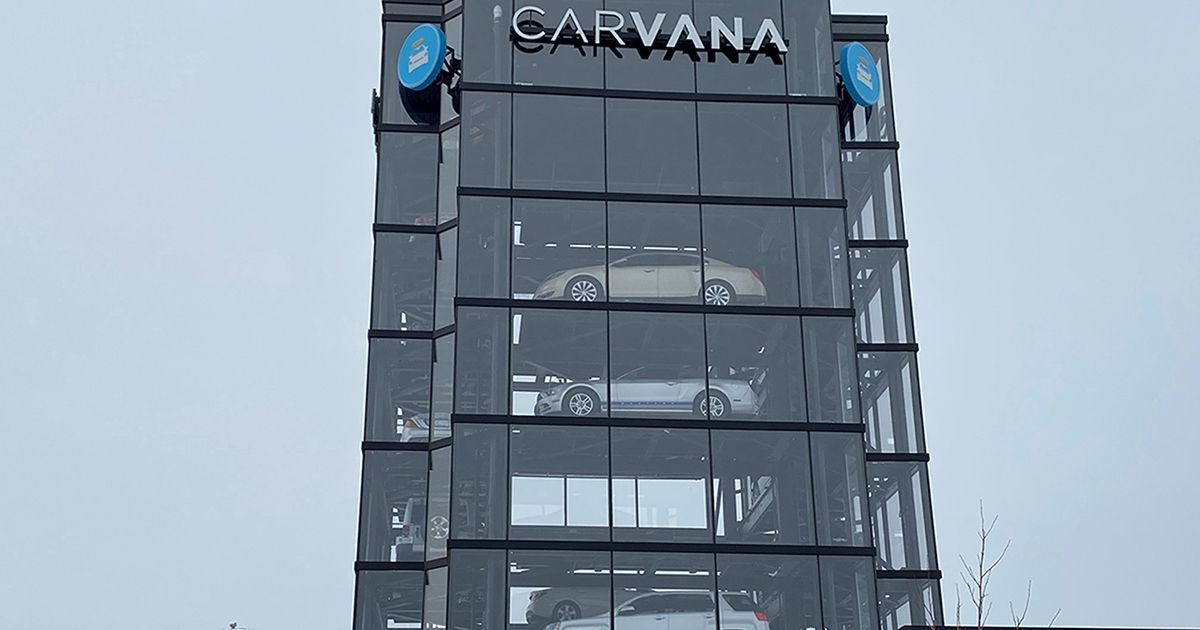
Carvana Co. said Wednesday that it sold fewer vehicles than it had planned for in the first quarter of 2022, which led to higher costs and lower profit per vehicle.
The online used-vehicle retailer sold 105,185 vehicles in the first quarter, up 14 percent year-over-year. However, Carvana said disruptions to its reconditioning and logistics network hindered further sales volume growth. High used-vehicle prices, interest rates and issues stemming from the omicron variant also negatively affected sales volume in the first quarter, the company said.
Carvana reported revenue of $3.49 billion, up 56 percent from the year-earlier period. But it recorded a net loss of $506 million, wider than its $82 million net loss a year ago. The total gross profit Carvana brought in per vehicle also fell to $2,833, down $823 from $3,656 a year ago.
In a letter to shareholders, Carvana CEO Ernie Garcia and CFO Mark Jenkins called the quarter “challenging.”
“Q1, I would say — it looked like the industry environment was deteriorating throughout,” Garcia said during a Wednesday earnings call with investors and analysts. “Disentangling how much of that was affordability, how much of that was just general consumer confidence or interest rates, is very, very hard.”
Carvana shares slipped 9.11 percent to $92.50 at the Wednesday market close, but rose 4.92 percent to $97.05 at 6:35 p.m., during after-hours trading.
Jenkins said Carvana usually prepares for sales volume six to 12 months in advance, meaning the company built capacity for “significantly” more volume than it fulfilled in the first quarter. Because Carvana’s costs are relatively fixed, less-than-expected sales volume caused reconditioning and transport costs to grow. Carvana said that led to the decreased profit and higher expenses per vehicle.
Carvana has repeatedly said one of its top priorities is to expand both its production capacity and logistics network. It hopes to do that by acquiring ADESA U.S., the No. 2 physical auction business in the nation.
The company announced that deal in February and hopes to close it in May.
If finalized, the $2.2 billion transaction would give Carvana 56 ADESA U.S. sites and the ability to recondition an estimated two million vehicles per year. Adding those locations also means Carvana’s reconditioned inventory will be within 200 miles of 94 percent of the U.S. population, the company said.
Carvana said it opened three of its own inspection and reconditioning centers in the quarter, bringing its total to 17. Those are located in Cincinnati, Oklahoma City and San Antonio.
Despite issues in the quarter, used cars and trucks sold to Carvana’s finance platform by customers with a FICO score above 700 jumped about 50 percent year-over-year, the company said.
Q1 results
Carvana announced these financial results for the first quarter:
Q1 net revenue: $3.497 billion, up 56 percent from $2.245 billion a year earlier
Q1 net loss: $506 million, wider than Carvana’s $82 million loss a year earlier
Q1 retail vehicles sold: 105,185, up 14 percent from 92,457 a year earlier
Q1 total gross profit per vehicle: $2,833, down $823 from $3,656 a year earlier